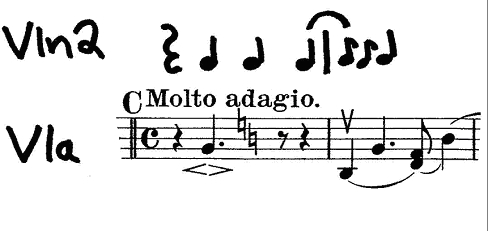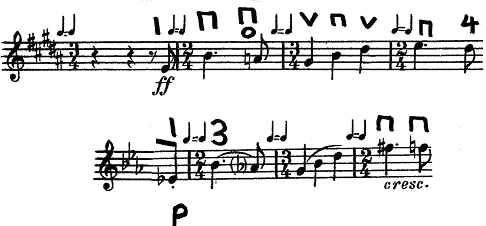Tips for a Workshop Performance
These are some ideas to get the most out of the coaching day, with satisfaction from doing the best performance one can after one day of work.
Our CMNC workshops, and many summer workshops as well, feature performances at the end of each coached day. Whether in a Master Class or a Performance Sampler, we are expected to play a five-minute section of our piece in front of others. This prospect focuses the mind wonderfully, but can be quite a challenge, especially with people and music that we may not know well.
Here are some thoughts on ways to make the experience less stressful and more fun. Many of these apply to all instruments, but a few are specifically for strings. I hope wind players and pianists can still find something to think about by adjusting the ideas to their own instrument.
1. Love the music.
There may be other pieces you would prefer to be playing, but right now, think of this piece as the most wonderful music in the world, and play it that way. The audience is more likely to love what you play if you love it first.
2. Set realistic expectations.
Never expect a performance to be as good as your best rehearsal. The likelihood is that things will go wrong, so don't beat yourself up over that. I judge a performance as successful if at least half the things we worked on come out OK, and anyone who got lost found his or her way back in without being too obvious. That's about as much as one can hope for in one day's work.
3. Write down everything.
With all those people watching, it can be hard to stay focussed and remember everything you have planned to do when performing. So write down fingerings, whom to watch, rhythm cues for other parts, and words from coaches about how to express each section.
Rhythm cues are especially important, as you don't have time to learn the entire score in a single day. Figure 1 shows a few bars of the viola part from the slow movement of Beethoven Opus 132, one of his late quartets. Without the second violin rhythm written in, the viola risks an uncertain entrance that can leave the following cello and first violin totally bewildered.

Figure 1
4. Adjust fingering and bowing to match dynamics.
Figure 2 shows two versions of the same tune from the 3rd movement of Shostakovich's 3rd quartet. The loud version uses more bows and lower positions.

Figure 2
5. Consider double stop approximations.
Don't even think of playing a double stop you cannot be confident will be in tune. Pick the note that makes the most important harmonic contribution to the piece, and focus on playing that note beautifully. Your audience will be much happier!
6. Align shifts with bow changes.
If the notes feel awkward at the performance tempo, consider adjusting the bowing. Aligning shifts with bow changes can help a lot. A lot of bowing comes from the editor, not the composer, so you don't have to feel that you are altering sacred writ. Figure 3 shows the viola part from the first movement of Bartok's 6th string quartet with some bowings I adjusted to fit my fingerings at the marked tempo.

Figure 3
7. Think of your tune as a concerto.
Especially if you are playing an inner part, jump on anything that looks even remotely like the audience might want to hear it. Play it like a concerto.
Never underestimate the gap between an accompanying forte dynamic and a solo forte dynamic. It is huge. Even if someone else has the main tune, if your accompanying line looks interesting, play it out. Figure 4 shows the opening of Schubert's A minor quartet. Both the first and second violin parts are marked “pp.” Violin 2's part is a critical harmonic contribution to the music and needs to be heard.

Figure 4
8. Try suggestions, even if they sound weird.
Be willing to try different approaches. Sometimes the strangest suggestions sound better than you think they will. And even if they don't, it will make your group members happy to know you were willing to listen to their ideas, and they will be more likely to try your ideas in turn.
9. Give your eyes time to move.
If you find yourself missing the first few notes of a line or page, then write them in at the end of the previous line or page. This can be especially helpful when the tempo is fast and there are big jumps or key or clef changes that your eyes may fail to pick up and process while you hunt for the new line or page.
10. Make music with every note.
Think about how to make every note an expressive contribution to the music, including long held notes and repeated accompanying figures. Adjust dynamics, part of the bow, width and speed of vibrato, length of notes, and anything else you can think of to match the line you are accompanying.
These are some ideas to get the most out of the coaching day, with satisfaction from doing the best performance one can after one day of work.